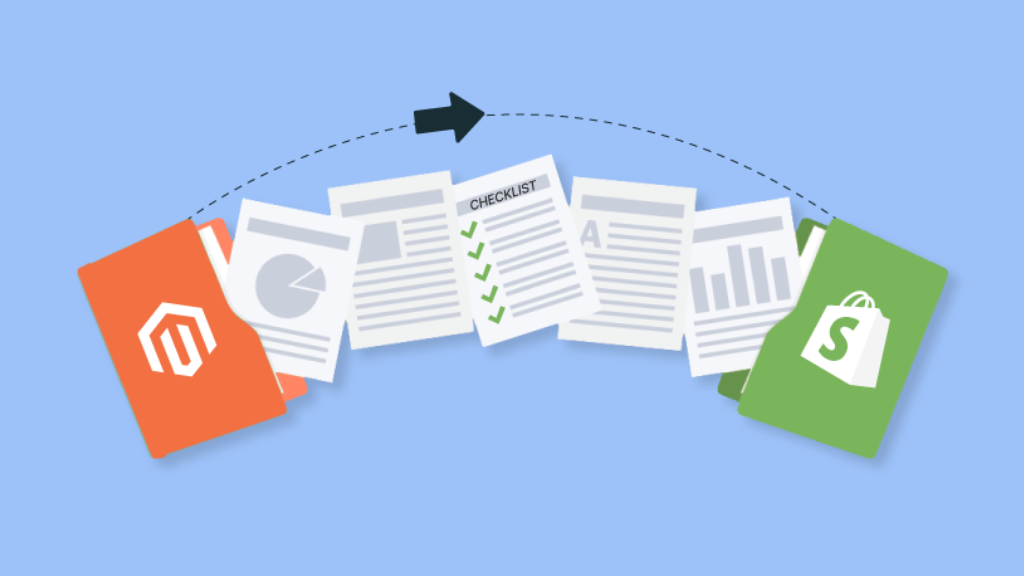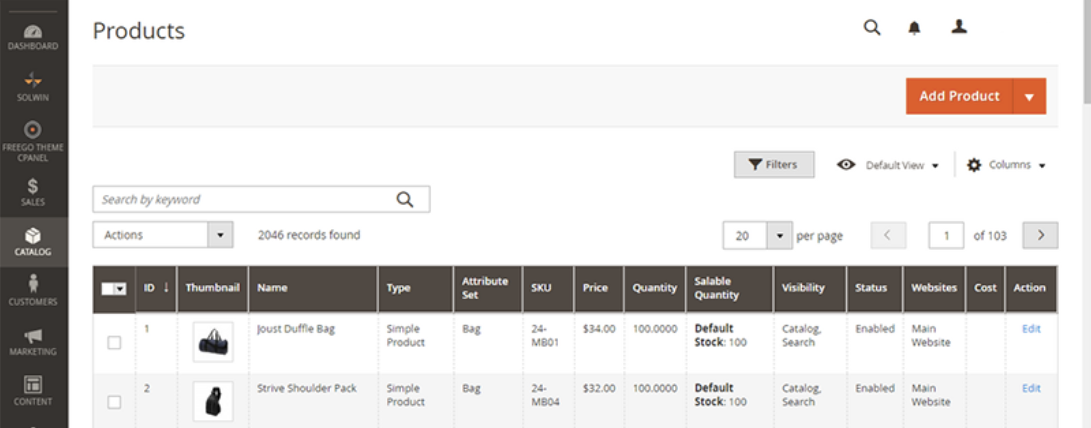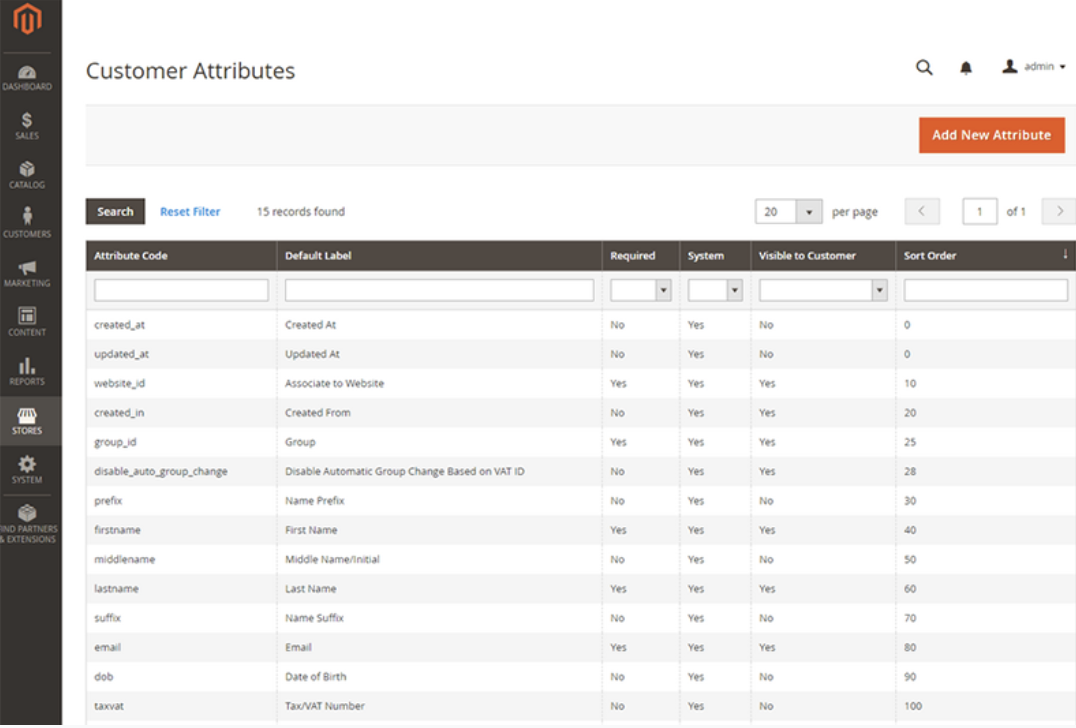Are you a Magento store owner feeling overwhelmed by the platform's intricacies? Do constant backend management tasks divert your attention from your customers? If these concerns resonate with you, you're in good company. Many e-commerce entrepreneurs are in the same boat, seeking more streamlined solutions. Shopify emerges as a beacon of hope for many. This guide, crafted by the Soft Loft team, is for those pondering a switch, aiming for a seamless transition.

Why Consider Migrating to Shopify?
Ease of Use: Shopify's intuitive interface is a breath of fresh air for those accustomed to Magento's complexity. Its user-centric design speeds up business operations, allowing teams to familiarize themselves swiftly and make adjustments without a hitch. Shopify's straightforward dashboard is a boon, even for those not well-versed in tech.
Hosting Benefits: Magento often leaves you to fend for yourself regarding hosting, translating to extra costs, time dedicated to server management, and the responsibility of regular updates. Shopify, a hosted solution, eliminates these concerns. It offers dependable hosting, ensuring uninterrupted store operations without the burden of manual updates.
Security: In an era where digital security is of utmost importance, Shopify doesn't disappoint. It upholds stringent security standards and boasts PCI DSS compliance, safeguarding customer data and transactions. Conversely, Magento requires additional security investments, something the Soft Loft team can guide you through.

Magento to Shopify Migration Checklist
Your Store's Aesthetic - The Theme
Dive into the world of Shopify with a design that resonates with your brand. Whether you're bringing your Magento theme or exploring fresh designs on Shopify, ensure it's a reflection of your brand's ethos.
Product Essentials
The heart of your e-commerce store is its products. As you embark on this migration journey, ensure every product detail, from descriptions and pricing to images, is meticulously transferred. This step is pivotal in the Magento to Shopify product transition, so give it the attention it deserves.
Valuable Customer Insights
Your customers are the backbone of your business. As you transition, ensure their data, encompassing addresses, order history, and contact details, seamlessly migrates with you.
Payment Dynamics
Shopify might introduce you to new payment gateways. Dive deep, research, and choose the ones that align best with your business needs. Remember, the checkout experience can make or break a sale.
Shipping Nuances
As you set sail on Shopify, fine-tune your shipping configurations. This includes aligning shipping rates and choosing the best delivery methods for your clientele.
SEO Considerations
Your Magento store's SEO efforts shouldn't go in vain. Ensure you replicate all SEO configurations, from URLs and meta tags to redirects, on Shopify. This ensures your store remains as visible as ever on search engines.
Integration Essentials
Your Magento store might have been powered by certain third-party apps and integrations. While Shopify might not have exact replicas, its vast app store is bound to have alternatives. Dive in, explore, and integrate the ones that align with your business operations.
Redirects - The Seamless Path
Ensure your customers find you, even on Shopify. Set up redirects from your Magento URLs to Shopify, ensuring a smooth navigation experience for your visitors.
Validation - The Final Check
Post-migration, take a moment to validate. Dive into your Shopify admin panel, scrutinize every detail, from product data to page displays. Any discrepancies? Address them immediately.
Engage and Inform
Your loyal customer base should be in the loop. Inform them about your transition from Magento to Shopify, ensuring they're updated and ready to engage with your brand on the new platform.
In Conclusion: Transitioning from Magento to Shopify might seem daunting, but with a structured approach, it's a journey towards a more streamlined e-commerce experience. Embrace the change, and let your online store thrive on a platform designed for growth.

The Migration Process
Backup Your Data
Before diving into migration, it's imperative to backup your Magento store data. This encompasses products, customer details, orders, and other content. It acts as an insurance policy, preventing potential data loss during the shift. As suggested, consider multiple backup options like database backup, media & file backup, or a comprehensive system backup.
Set Up Your Shopify Store
Begin by creating a Shopify account. Ensure that the product data aligns with Shopify's standards. Depending on your business scale and desired features, choose an appropriate Shopify plan. Next, decide on your store's design and theme. Whether you're replicating your Magento design, tweaking it, or opting for a complete overhaul, ensure it aligns with your brand identity. Discussing design changes with migration experts beforehand can save time and resources.
Choose Essential Apps and Integrations
Shopify's App Store is a treasure trove of functionalities. From migration connectors to other add-ons, it enhances your store's capabilities. If specific integrations are pivotal for your operations, consider hiring developers for custom solutions.

Migrate Your Data and Content
This crucial step involves transferring all data from Magento to Shopify. This includes products, customers, reports, analytics, and other content. Ensure a systematic transfer: products first, followed by customers, and then historical data. While products and their details like name, description, and price can be migrated, remember that due to API restrictions, downloadable files might not transfer to Shopify. Customer data, encompassing details, order history, gift cards, and discount codes, requires meticulous attention during migration to prevent future issues.

Review Your Imported Data
Post-migration, invest time in reviewing the transferred data. Log into your Shopify admin panel and scrutinize product data, ensuring accuracy and proper image display. Examine your store's pages for completeness and correct display. Rectify any discrepancies immediately.
Conclusion:
Transitioning from Magento to Shopify is no minor feat, but it promises a world of benefits for ecommerce businesses seeking a more user-friendly platform. By recognizing the advantages and adhering to a systematic migration procedure, you can position your online store for unparalleled success on a growth-centric platform, and remember, the Soft Loft team is here to assist every step of the way.



